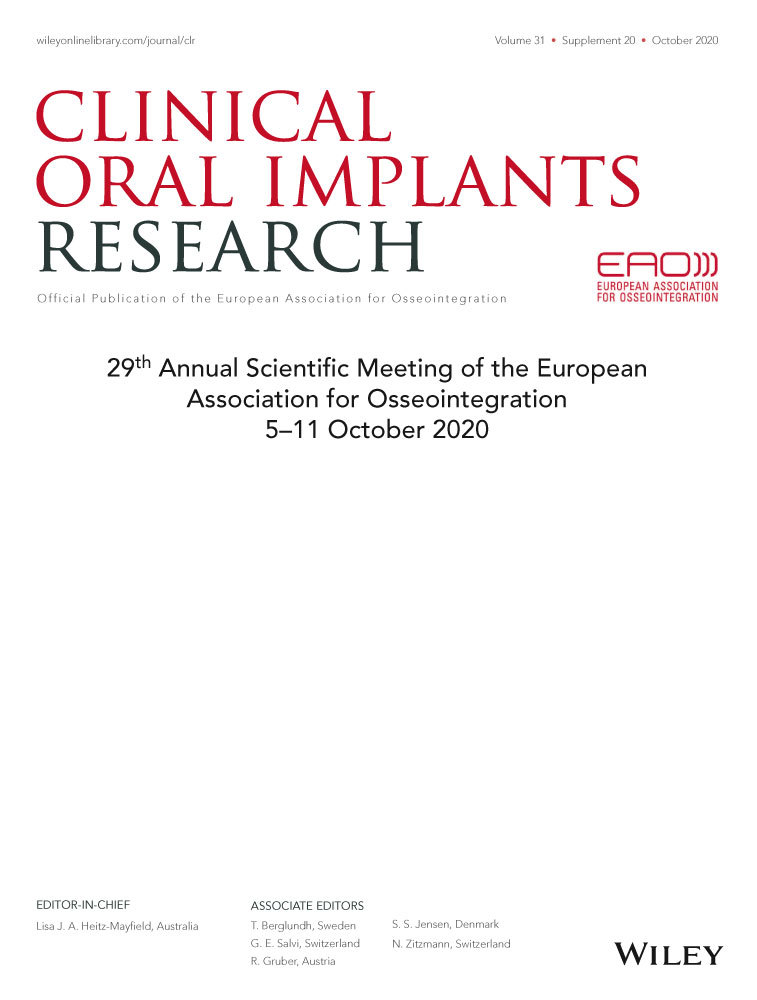Effects of collagen membranes with different properties in peri-implant dehiscence defects
S0QIK ePOSTER BASIC RESEARCH
Background: Many factors are known to influence the success of implant treatments. One of the most important factors is the adequacy of bone for implant placement. In the guided bone regeneration (GBR) technique, the use of barrier membranes allows slower migrating cells with osteogenic potential to repopulate the osseous defect.
Aim/Hypothesis: The aim of this study is to compare collagen membranes with different structural properties in their histological and histomorphometric effects as well as bone-implant contact values in guided bone regeneration techniques for treating peri-implant defects.
Materials and Methods: In the iliac crests of six sheep 4 defects were created with a trephine burr where an implant was inserted to one side of the defect (3.3x10 mm). A control distance of 6 mm were left between the implants. Same procedure was performed on the right and left iliac sites. The autogenous bone grafts harvested were placed on the defects and 4 collagen membranes with different structural properties were placed on peri-implant dehiscence defects in accordance with protocols of GBR techniques. The sheeps were sacrificed in two groups (3 weeks and 6 weeks) for early and late recovery period. The histological examination of bone-implant contacts was performed with undecalcified method.
Results: The groups included:
•Sugar cross-linked collagen membrane•Natural porcine collagen membrane•Natural bovine collagen membrane•Control (no membrane)
It was found that while the greatest bone-implant contact value was found in the sugar cross-linked collagen membrane group, no significant difference was found between the natural collagen membrane groups regardless of origin. All test groups showed better bone-implant contact value compared to the control group.
Conclusions and Clinical Implications: Based on the histological and histomorphometric findings, in the treatment of peri-implant defects according to GBR protocols, sugar cross-linked collagen membranes are significantly more successful in increasing bone-implant contact. Resorbable barrier membranes are advantageous for use in guided bone regeneration for the treatment of peri-implant defects, eliminating the need for surgical re-entry.
Keywords: Peri-implant defect, Guided bone regeneration, Dental implant, Collagen membrane, Animal study




